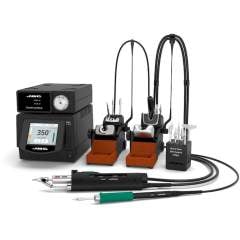The Role of Bosch Rexroth in Modern Manufacturing
The Role of Bosch Rexroth in Modern Manufacturing
Blog Article
The Role of Bosch Rexroth in Modern Manufacturing
Automation and movement get a grip on techniques are spinning the guidelines of manufacturing, logistics, and actually power management. Behind the layer, amazing products and services and strong innovations are operating performance, sustainability, and output to exceptional new heights. Why is these alternatives such a warm soldering station (lötstation) subject, and why are they sugar trend provides in commercial circles?

Shaping the Potential with Figures and Developments
Nowadays, over 60 percent of factories in advanced economies have applied some level of automatic action control. Modern receptors, electrical drives, and electronic controllers today underpin sets from robotics to conveyor belts. In accordance with a 2023 report, the global movement control market alone is expected to attain $21 billion by 2027. That quantity shows a compounded annual growth rate (CAGR) of 6.5 per cent, showing just how eager industries are to embrace high-precision automation.
But it's not only standard factories which can be benefitting. Circulation centers across North America and Europe are reimagining workflows through intelligent conveyor programs and autonomous vehicles. These improvements increase throughput by up to 30 per cent, reduce labor fees, and reduce error prices across fast-paced offer chains.
Accuracy Matches Production
High-precision activity engineering has become a must-have in areas challenging accuracy and reliability. Semiconductor production is an example, where linear action guides and multi-axis controllers provide reliability calculated in microns. Recent surveys reveal that makers leveraging these answers see deficiency costs decrease by as much as 40 percent, providing them with a significant edge in a fiercely aggressive field.
Renewable energy and e-mobility are viewing similar revolutions. Breeze and solar installations increasingly depend on real-time automation to improve energy record and streamline maintenance. That clever method helps reduce downtime, with one study remembering a 20 per cent reduction in preservation prices at features that have used automated control systems.
The Wise Manufacturer Revolution
Automation is no further nearly reducing individual error. It's about producing intelligent factories, where all communicates seamlessly. Systems presenting predictive analytics and IoT connectivity check machinery health and anticipate preservation needs before breakdowns occur. Research indicates that predictive preservation may reduce unplanned downtime by as much as 50 per cent, translating into substantial savings for plant operators.
From automotive makers ramping up creation pace to logistics firms seeking specific managing and power savings, the numbers inform a engaging history about this accelerating sector. If you monitor current traits or form purchasing conclusions, understanding where a is went is crucial.
What's Next for Automation and Movement Control?

The concentrate on sustainability, data-driven manufacturing, and better source stores is only going to grow. Global demand for robotics and intelligent controllers continues to go up, particularly in sectors where efficiency and flexibility suggest survival. Industries investing in next-generation automation are placing themselves apart—with the figures to show it.
For companies mapping out their next transfer, automation and movement control are becoming less of an alternative and more of a necessity. With returns measured in higher productivity, decrease prices, and new abilities, the situation for use has never been clearer.
Report this page